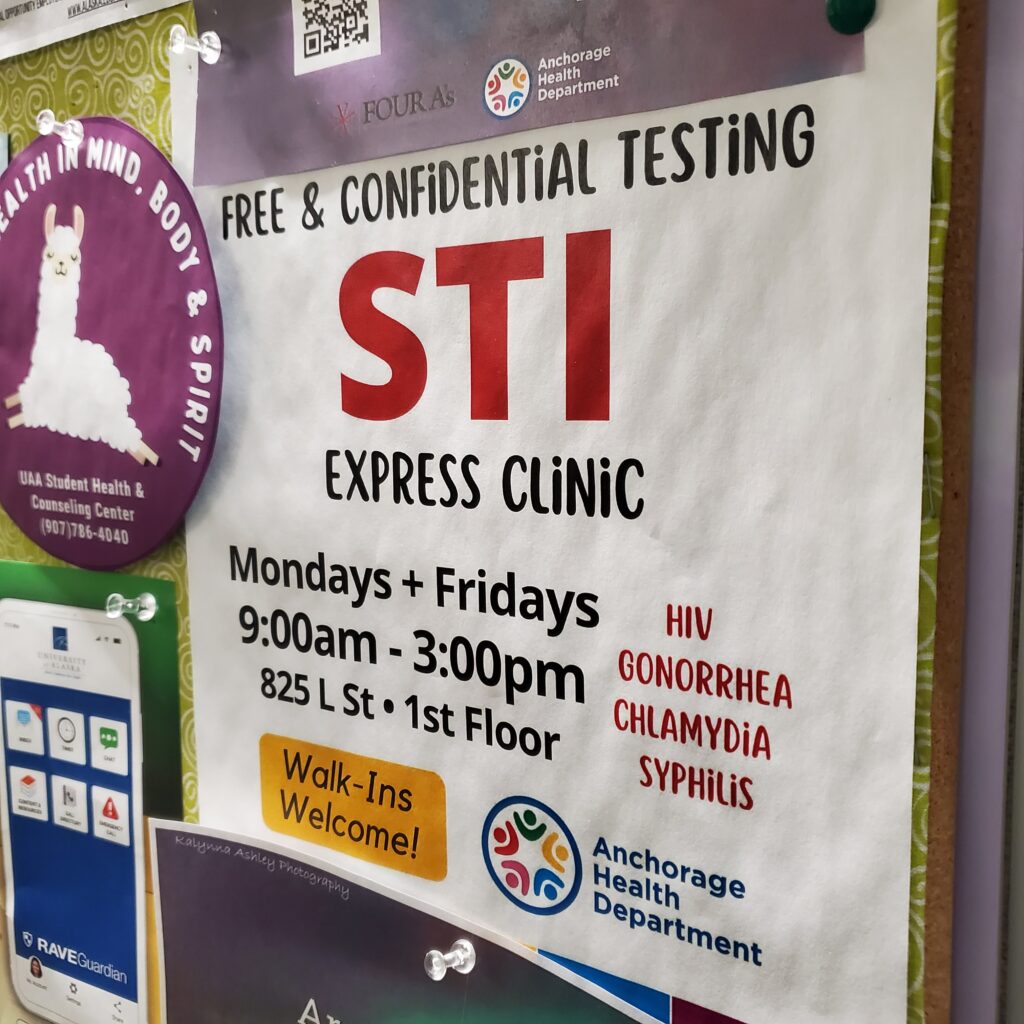![]()
A flier posted on on Thursday on a University of Alaska Anchorage bulletin board gives information about testing for sexually transmitted infections. Alaska had the nation’s highest gonorrhea rate last year. (Photo by Yereth Rosen/Alaska Beacon)
Alaska had the nation’s highest rate of gonorrhea last year and the third-highest rate of chlamydia, the U.S. Centers for Disease Control and Prevention reported.
The rankings are from the CDC’s newest annual report on sexually transmitted infections, which was released last week.
Nationally, gonorrhea rates dropped 7% from 2022 to 2023, the CDC reported. Alaska’s 2023 rate was also lower than the state’s 2022 rate, but the decline was slighter. Gonorrhea can cause infertility in women and men, infections that spread to various parts of the body, and complications for babies, including blindness. Alaska’s gonorrhea rate dropped from 314.1 per 100,000 people in 2022 to 310.9 per 100,000 people last year, a decline of less than 1%, according to the CDC report. But the state’s rate was high enough to move from fourth place in 2022 to the top of the state list for last year, according to the CDC information.
The national gonorrhea rate was 179.5 per 100,000 people, the CDC said.
For chlamydia, Alaska also ranked third among U.S. states in 2022. But the state’s 2023 rate for that infectious disease was about 4% lower than that of the year prior, according to the CDC information.
Alaska’s 2023 chlamydia rate of 697.7 per 100,000 people compares to a national rate of 492.2 per 100,000 people, according to the CDC. Chlamydia can cause pelvic inflammatory disease, prostate gland infections, infections in newborns and other complications.
Sexually transmitted infection rates are typically higher in Alaska than in other states. For example, in 2010, Alaska had the nation’s highest chlamydia rate and the second-highest gonorrhea rate. The cases dominate the state’s annual tally of infectious diseases beyond influenza, COVID-19 and respiratory syncytial virus.
In 2023, Alaska also had syphilis rates higher than the national average. The state was the 11th highest for primary and secondary syphilis, which are the first and second stages of the infection, and 15th highest for congenital syphilis, the form of the disease passed to newborns by their mothers.
Alaska’s rates of primary and secondary syphilis increased from 2022 to 2023, from 21.8 per 100,000 to 22.5 per 100,000, or about 3%, according to the CDC. Ten babies were born with syphilis in Alaska in 2023, compared to 12 in 2022, according to the CDC.
Syphilis rates have spiked nationally in recent years, but the rate of increase slowed to 1% nationally in 2023, the CDC said.
Particularly worrisome to health officials is the sharp increase in syphilis that is present at birth, known as congenital, which can be fatal to the infants. Congenital syphilis can also cause lasting and serious health problems, including bone deformities, blindness and deafness.
The increase has advisories for more testing for the infection, especially among people considered to be at high risk.
GET THE MORNING HEADLINES.

